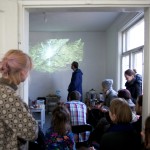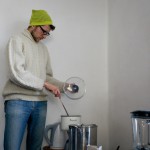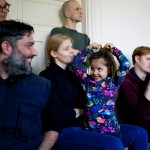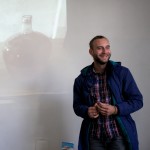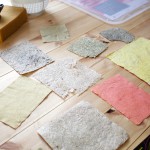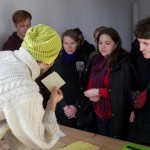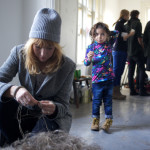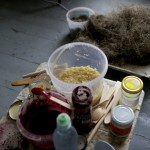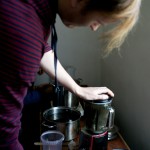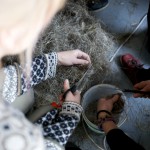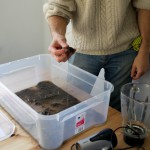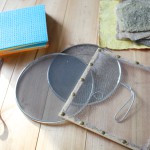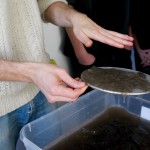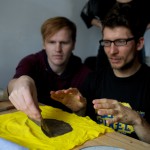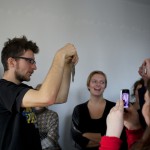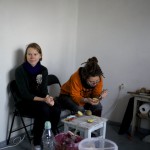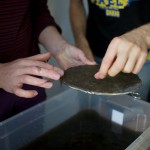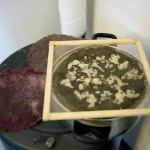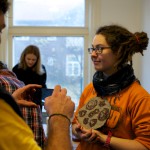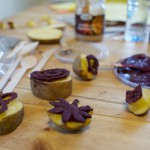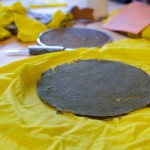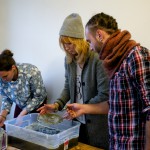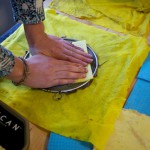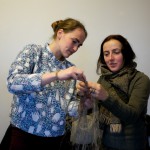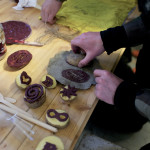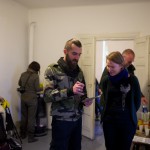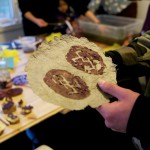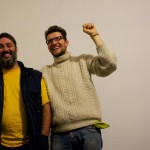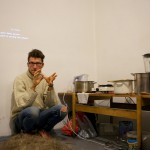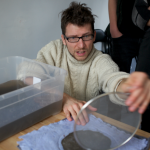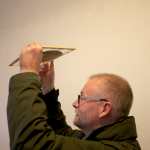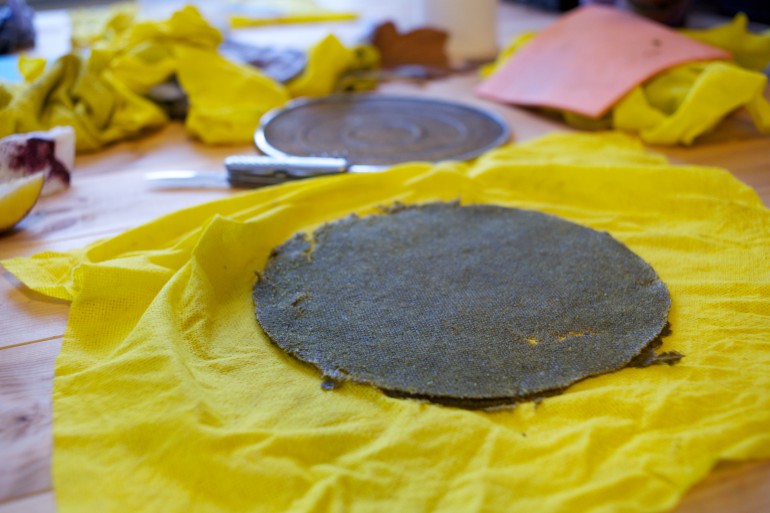
Bacterial Love Letters Sent From “Malonioji 6”
2015-12-20
Andrew Gryf Paterson reflects on his experience of the first workshop from the series “Bacterial Love Letters” which took place at “Malonioji 6” on the Halloween day in 2015.
It all started with a witnessed hands-on workshop, an invitation proposal or recommendation during Pixelache Helsinki Festival 2015, and it grew and spread on from there.. Bacterial Love Letters were first made in Vilnius on the 31st of October 2015. We anticipate that more will be made, given and sent in the future. We know that the bricolagic energy of the first workshop has already started copylove actions elsewhere. But let’s try to explain briefly the why, the how, and what now.
We need to produce ecologically sustainable and friendly artefacts. We can do more to promote the inter-dependence humans have on friendly micro-bacteria to survive. Also we can clarify our position and proportion within the biome.
Two old friends from Pixelache Helsinki, Wojtek Mejor, from Warszawa, Poland, and Andrew Gryf Paterson, originally from Scotland but based and associated for a long time in Helsinki, offered the Lithuanian Interdisciplinary Artists’ Association a paper-making and bacterial print workshop, as the last contribution to the 2015 series of DIY workshops.
The workshop introduced to it’s participants the method of making paper out of plants and ‘charging’ it with locally grown bacterial cultures! However, if we were honest, we hadn’t done this before, together. The ambition emerged as a hopeful, experimental jump into the not-yet-known combining curiosities and passions, and in process, inviting others to explore with us together in a hands-on and intuitive way. What was the mind-boggling-but-best combination of paper-fibres and bacterial fermentation? Which thick-liquid ferments would make good inks for printing? How might we make prints that produce the resultant image or text that one wants? Apart from learning a practical skill and taking home artefacts in the form of self-made sheets of paper, the participants had the opportunity to exchange knowledge about wild edible plants, local and foreign traditions of using this often ignored resource.
We gathered together different aspects into the workshop. In addition to those who signed up for participation, we were fortunate to invite into the occasion Arturs and Ineta Lapka, who joined the workshop from Riga-Aizpute, Latvia, but crucially provided the plant fibres for the paper-making. It was a surprise for the participants: They had donated a large pile of industrial hemp (Cannabis sativa minus the THC psycho-active agent) for everyone to use. Wojtek had gathered all the household equipment necessary for sieving the pulped fibres into sheets of papers, while Andrew had brought a selection of fermented materials which contain friendly gut bacteria – aronia juice, rye-bread starter, sauerkraut – to infuse (blended into the fibres), or add layer (via printing) to the paper.
So what happened over the 6 hour workshop? Some participants were in the fibre-processing corner of the space, chopping and cutting, boiling and blending with a food mixer. In another corner a group were sitting peeling potatoes, and carving graphical images as stamps into the half-cut flat surfaces. Another group self-organised around the paper-making table to figure out this step and practice. Ineta Lapka from Latvia encouraged a couple others into weaving hemp fibres into wrist bracelets for everyone taking part in the workshop. Gradually everyone was bonded with the hemp fibres one way or another. As the workshop progressed more and more participants joined in the sifting of paper sheets from a murky pool of fibre and ferment. Out-coming colours were grey, grey-purple, deep-purple, yellow-grey and so on. Potato-prints reproduced swirls, cats, hearts, alphabet letters, Lithuanian power symbols, hash-tags and so on. The Aronia ferment-ink went down as a purple printing treat. A Halloween mask drew the breath out of a few.
In summary, we gained heart-warming praise, conversations and new friendships emerged from the prototype bacterial love letters. The experimental workshop was on all accounts a successful and fun time, and offered promise for further developments and travel. This potential is extended to all. Take heart and get involved. Imagine you send a message from another part of the world and in it you embed a part of the very culture and environment that is nearby – a bacterial culture. Maybe you can even use it to print a short message. If additionally you produce the paper yourself from scratch out of locally grown materials, that would make quite an impressive postcard wouldn’t it?
=====
Wojtek Mejor is a cultural producer, educator, organizer and activist living in Warsaw. Involved in the cooperative movement, food activism, art workshops, disseminating degrowth theory and community supported agriculture. Member of Dobrze Food Coop, GROWL Degrowth Network, Warsaw Degrowth Group.
Andrew Gryf Paterson is an ‘artist-organiser’, cultural producer, educator and independent researcher. Specialises in developing and leading inter-and trans- disciplinary projects exploring connections between art, digital culture and science, cultural activism, ecological and sustainability movements, cultural heritage and collaborative networks. http://agryfp.info/
Wojtek and Andrew are friends since the early Pixelache Helsinki Festival years (2003-) and have been involved together in various related processes. Specifically with a DIWO (Do-it-with-others) style, they have collaborated in ‘Boxwars’ (2008), the ‘Allotment Games’ (aka Siirtolapuutarhapelit, 2009); contributed to different stages of the ‘Herbologies/Foraging Networks’ programme in Finland, Latvia and Poland (2010-2011), as well as shared time and experiences at the ‘Coop Camp Tampere: Food-related cooperation’ event in 2012.
Photos by Lina Albrikienė

